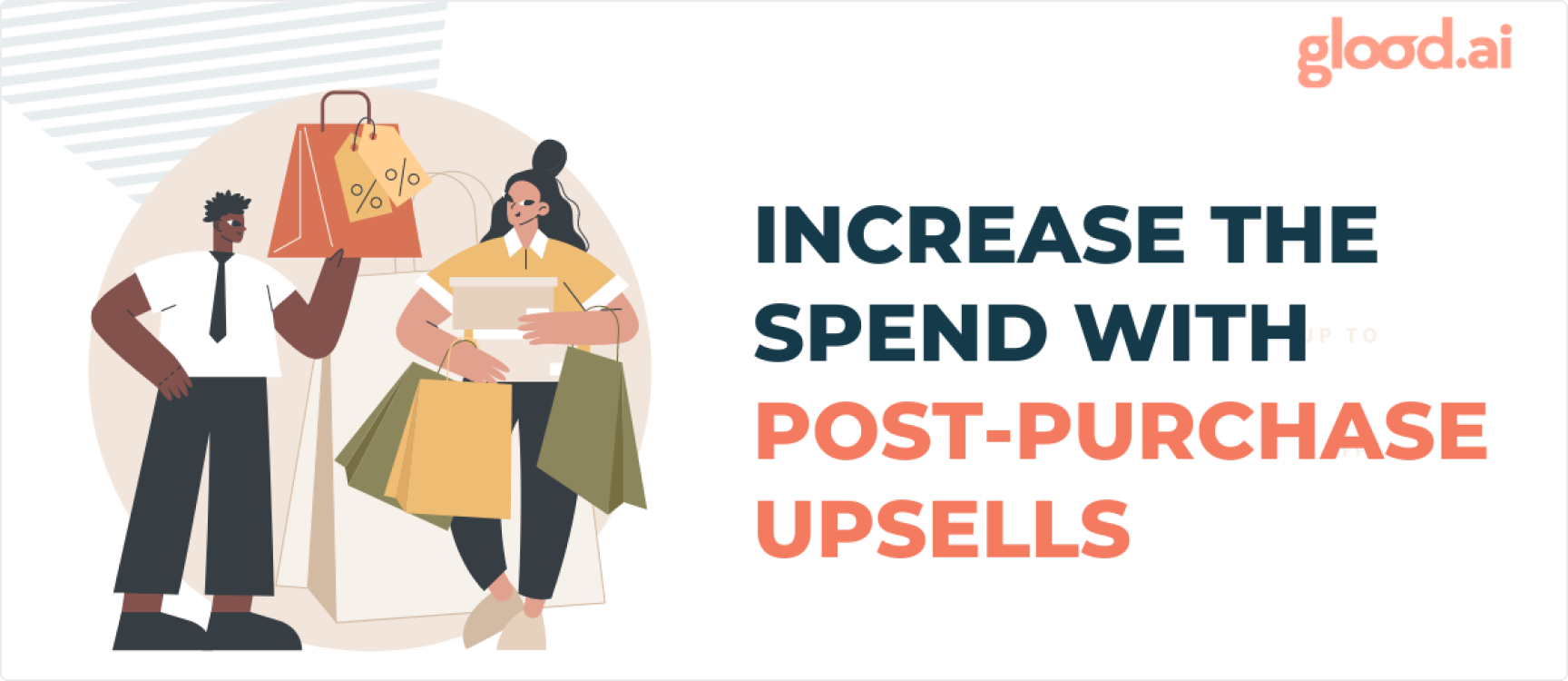Increase the Spend with Post-purchase Upsells


Keeping the customers coming back to shop for more is not just a skill; it's an art. Upselling is a technique that helps your customers see the benefit of buying more from you. Learn about what upselling is and how you can implement it post-purchase for great results!
Upselling is a serious marketing strategy that significantly boosts the sales of a brand by simply making relevant and meaningful recommendations to customers who have already bought an item from a brand.
Sucharita Kodali, a Forrester Analyst, emphasizes that upselling accounts for almost 10 to 30% of the sales revenues on e-commerce. That is huge, considering how little brands focus on this strategy.
Upselling also comprises enhancing the consumer experience of an e-commerce store by assisting their shopping journey in a way that covers all the bases. Many brands are resorting to artificial intelligence as a predictive, pattern-based tool for generating product recommendations that form the foundation of upselling strategies. Let's dig deeper.
Upselling Vs. Cross-Selling
While both these sales strategies are intentioned towards increasing the sales of a brand, they differ in their base concept. Cross-selling involves analyzing the type and category of products that a consumer has carted and suggesting purchases related to this item that would complete the picture. For example, for a customer purchasing a GoPro, the cross-selling recommendations engine would suggest buying a pair of batteries and a protective case for the device. This helps boost sales.
On the other hand, upselling consists of increasing the value of a sale a little higher than the previous purchase a customer had made. For example, on purchasing a 12oz pack of coffee, an upselling engine would recommend the purchase of a 2lb pack with some offers or freebies.
While increasing the value of a sale for the business, the AI engine still delivers value for the customer through offers/discounts/freebies, etc. Also, If you'd like to cut down on your paid ads spend which is eating away your margins you can try out platforms like Expert Llama to hire top SEO experts.
Compelling Reasons to Implement Post-Purchase Upsell Strategies
Exploring customer retention involves exploring what your customers like to shop for and how they come to this decision. This knowledge can help you sell more and higher value products through post-purchase upselling.
A customer who buys from a brand more than once is likely to come back for more – using AI engines to identify their shopping preferences and items helps craft a good post-purchase upsell strategy.
Reduce Customer Churn
Customer churn is inevitable. However, it's possible to reel it in a little bit using upselling as a strategy to pitch better products to your customers after they complete a purchase with you.
Employing intelligent AI engines to "understand" their needs and crafting a recommendations list to suit their tastes keeps them coming back.
Upselling Helps in Upscaling
Sounds unbelievable, but this isn't what BombTech Golf thought. By deploying a super-effective post-purchase upselling strategy, this company raised their average order value to a little over $60, reduced their cart abandonment by 10%, and increased their conversion by 45%. This helped the company increase its marketing and ad budgets to try and scale up its operations.
8 Great Ways to Prompt Post-Purchase Upsells
Upselling is a great way to encourage your consumers to come back to your brand for more and better products. However, the way you do it needs to be subtle and encouraging, not intrusive or overwhelming. Here are 8 ways to achieve that:
Expression of Gratitude
A little pop-up message that thanks the customer for shopping with you does wonders to retain them as well. This pop-up can be skillfully used to upsell products with an encouraging message to come back and shop.You can also include a discount coupon for a future purchase to retain the customer.